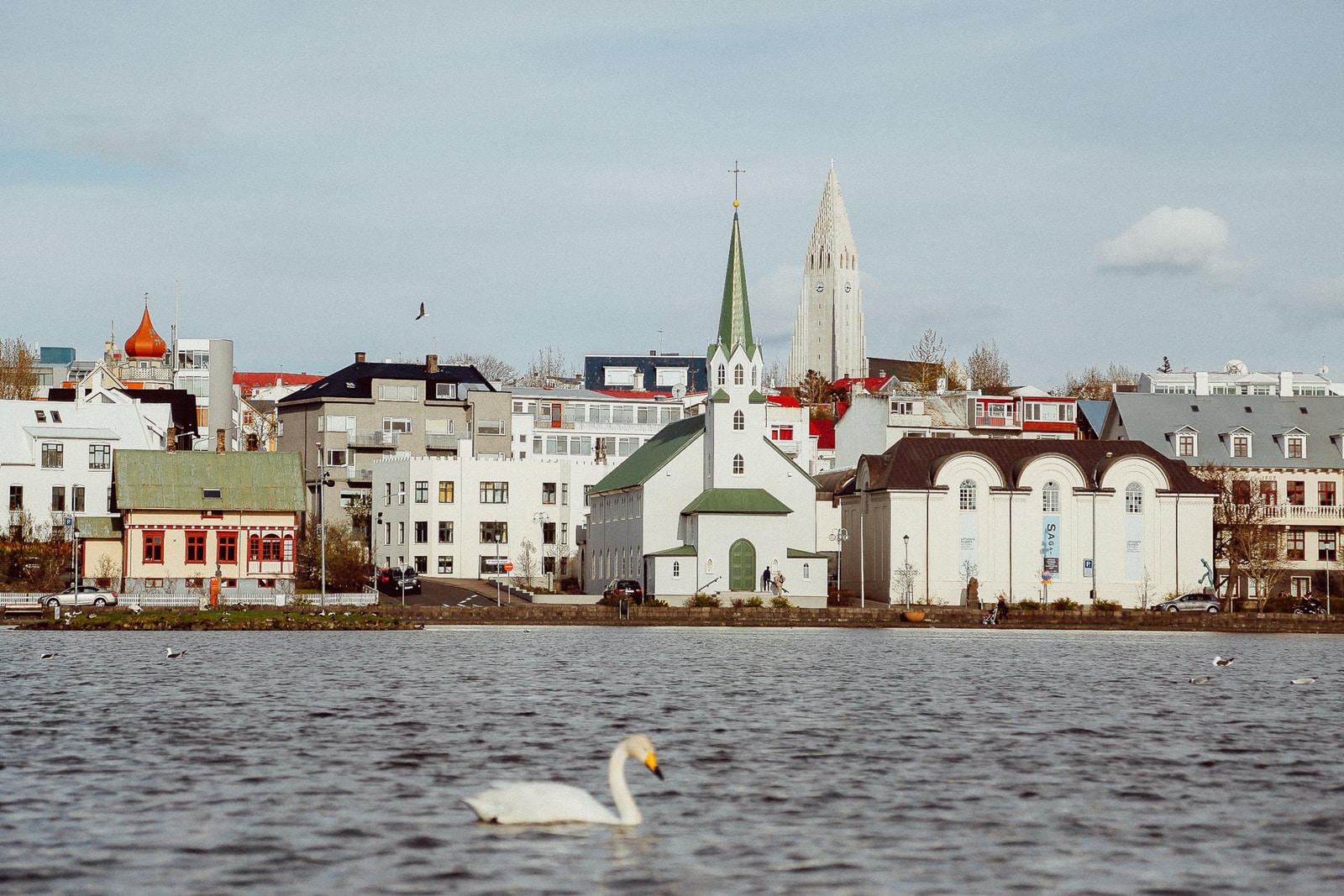It’s true that when we think of Iceland, we tend to picture its raw, untamed landscapes first – if not exclusively – with its volcanoes, waterfalls, fjords, parks and nature reserves, but rarely its cities. And yes, it’s true they’re few in number and rather small.
Yet the main one, Reykjavik, is worth stopping for and exploring properly. And then there are the others too…
About Cities in Iceland
Iceland is a small country of 383,000 inhabitants where the capital, Reykjavik (140,000 residents), and its suburbs alone account for two-thirds of the Icelandic population. This means that outside this area, the population remains sparse and cities are scarce.
In fact, the country has only 115 municipalities in total, and if you exclude the other communities around Greater Reykjavik, Iceland’s second city is Akureyri with just 20,000 inhabitants. As for the rest, only five municipalities have more than 5,000 inhabitants and about twenty have between 1,000 and 5,000. Large villages, essentially…
So it’s worth bearing in mind that the concept of a city in Iceland is quite different from what we know in France or the UK when it comes to size and the services they offer.
Reykjavik
Although the Icelandic capital might be considered a “medium-sized city” by European standards with its 140,000 inhabitants, it remains a young, dynamic city that’s pleasant to live in, with plenty going on thanks to its numerous bars, restaurants and nightlife venues.
Culturally too, Reykjavik has numerous monuments, countless museums and galleries, plus various neighbourhoods whose architecture – if not history – deserve attention.
In short, even if you’re only coming to Iceland to discover its incredible natural environment, Reykjavik deserves far more than just a quick visit.
Akureyri
Located at the head of a fjord, less than 50 kilometres from the Arctic Circle, Akureyri is the major settlement on Iceland’s north coast and therefore the country’s second city after the capital and its suburbs, even though it has fewer than 20,000 inhabitants.
It’s both an economic and cultural centre, with the services and transport links you’d expect, which can serve as a base for exploring the surrounding area, whether that’s Lake Myvatn or the nearby Godafoss, Dettifoss and Selfoss waterfalls. The town also offers some nightlife with its shops, bars and restaurants, as well as a few museums and churches to visit.
> Infos : www.visitakureyri.is
Akureyri’s Top 6
Akureyrarkirkja
This Lutheran church, simply called Akureyri Church locally, is something of a symbol of the town. It was built in concrete in the 1940s in a modern style. With its two linear towers pointing skyward, it’s visible from everywhere, perched on its hill overlooking the entire town. Its organ and stained glass windows depicting scenes from the island’s ecclesiastical history are particularly noteworthy.
Akureyri Botanical Garden
Opened as an urban park in 1912, the botanical section was only added half a century later. Today the site features 6,000 types of flowers, trees and plants from around the world, plus about 400 species of Iceland’s endemic flora
Lögmannshlidarkirkja
This is a small wooden church, white with a red roof, built around 1860 slightly outside town on heights offering views over the settlement and fjord.
Museums
First there’s the Akureyri Museum dedicated to the town, fjord and region, where you can see various objects, documents and other exhibits on the subject. It’s housed in Akureyri’s oldest building, constructed around 1850.
Next, you can visit the Akureyri Art Museum, which focuses on contemporary art with temporary exhibitions by local artists.
And finally, there’s the Aviation Museum, established in 2000 in a hangar at the town’s small airport. It traces the century-old history of Icelandic aviation with various exhibits, documents, models and aircraft on display.
Other Towns and Large Villages
Egilsstadir
Although the town doesn’t exceed 3,000 inhabitants, it remains the largest on Iceland’s East Coast, bringing together various shops, hotels, restaurants and regional services. But for many tourists, Egilsstadir is at best a place to pass through or refuel, as it’s true that aside from the East Iceland Heritage Museum which tells the local history, it’s mainly the surroundings that attract attention, whether for outdoor activities or exploring the neighbouring fjords.
Höfn
This small lobster fishing port is somewhat isolated on its peninsula in the east of the country, though it’s nevertheless close to Route 1 which circles the island and especially to several much-visited glaciers and natural sites.
As a result, Höfn has become recognised in recent years as a base for those wanting to explore the Vatnajökull glacier, Skaftafell park or the lakes of Jökulsárlón and Fjallsárlón.

Husavik
On the north coast, just below the Arctic Circle, this large fishing village may be the site of the very first Viking settlement on the island around 860.
While this fact isn’t actually confirmed, what is certain is that the town has built an international reputation for whale watching, to the point of being considered Europe’s whale watching capital, complete with a dedicated museum. So if you want to see whales, this is the place to come during the summer months when encounters are most likely.
Isafjordur
With nearly 3,000 inhabitants, Isafjordur is the largest town in northwest Iceland, in the fjord region. It’s an economic, commercial and cultural hub – if not entertainment centre – for the ten thousand or so people living in this rather wild region that’s often isolated in winter.
Like most of the country’s fishing ports, it’s nestled at the head of its attractive fjord and its tourist role remains as a base for discovering this entire part of Iceland and the outdoor activities available there.

Keflavik
This town a few dozen kilometres west of Reykjavik owes its development to the American base that was long established there and the presence of the island’s international airport.
Today, this urban area more broadly known as Reykjanesbær, which includes the neighbouring community of Njarðvík, has more than 15,000 inhabitants. While not particularly touristy, it offers one or two interesting museums (including the Viking World Museum) and the possibility of whale watching trips from its harbour
Stykkisholmur
With just over a thousand inhabitants, this is the main town on the beautiful Snæfellsnes peninsula. Its colourful houses, small harbour surrounded by basalt columns, plus its Volcano Museum tracing the history of nearby Snæfellsjökull have made it a tourist stop you should appreciate. What’s more, its surroundings are full of walks and small sites to discover, whether caves, waterfalls, beaches or otherwise.
> Infos : www.visiticeland.com

